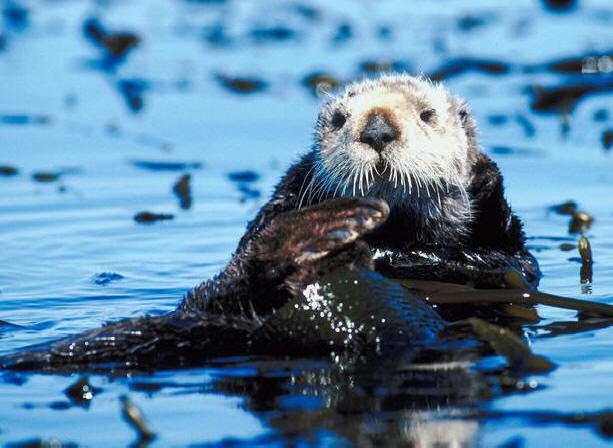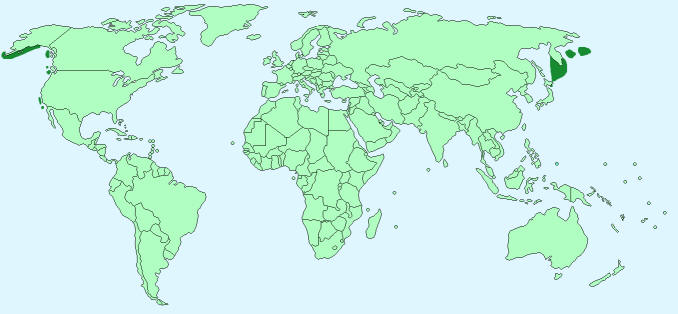Sea Otter

Scientific Name -Enhydra lutris
Classification – Carnivore
Gender Names – Male – dog; Female – bitch; baby – pup
Collective Noun – bevy, family, lodge, raft
Average Length – 1.25m (4 ft)
Average Weight – 30 kg (65 lbs)
Speed – surface – 1.5 km/h (0.9 mph); underwater – 14 km/h (9mph)
Life Expectancy – 10 to 12 years
Mating Season – throughout the year
Pregnancy – 6-8 months
Special Features – they have webbed feet to help them swim and water-repellent fur to keep them warm and dry. They spend most of their time floating on their backs.

Family Unit – Sea otters spend much of their time alone foraging for food but can also often be found floating together in single sex groups called rafts. Apart from mating season males and females live separate lives. Pups remain with their mothers for 5 – 12 months.
Geographical Distribution – California, Washington, Alaska, Canada, Russia, and Japan.
World Population – 100,000
Conservation Status – endangered
Natural Habitat – coastal regions
Diet -clams, mussels, urchins, crabs, and fish
Predators – humans, sharks, bears, eagles and killer whales
Harvard Reference for this page:
Heather Y Wheeler. (2015). Sea Otter. Available: https://www.naturalhistoryonthenet.com/Mammals/sea_otter.htm. Last accessed Monday, July 18, 2016
Mammals Pages
Features
Classification
Mammals A – Z
